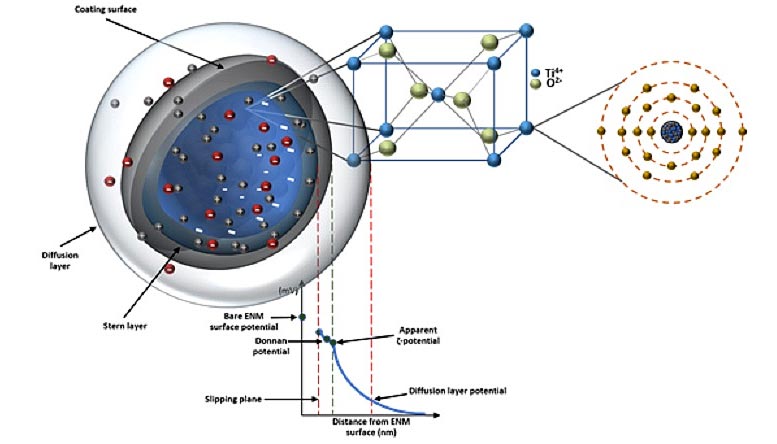[ad_1]
Descriptor scale – from whole nanoparticles to unit cells to individual atoms. Credit: University of Birmingham
Researchers have developed a “library of properties” to identify the environmental impact of nanomaterials faster and more cheaply.
Nanomaterials have helped a variety of industries and revolutionized daily life, but there are concerns about potential harmful effects such as toxic effects after accumulation in various organs and indirect effects from the transport of co-pollutants. ..
The IT project NanoSolve, funded by the European Union H2020, is developing an integrated approach to computer-aided testing and assessment (IATA) for the environmental health and safety of nanomaterials.
For the past two years Birmingham University We worked with experts from Nova Mechanics in Nicosia, Cyprus to develop a decision support system in the form of a standalone open software and cloud platform.
The team has developed a free cloud library that contains the full physical and chemical properties of 69 nanomaterials and a calculated molecular descriptor to add value to the information available. Details will be published on Nano Impact.
Professor Iceult Lynch of the University of Birmingham commented: A combination to create larger data sets.
“Providing the community with a library of computed and experimental descriptors with a detailed explanation of how they are computed is an important first step in closing this data gap. is.”
The cloud-based development of nanomaterial libraries is the fifth free web-based application of the project.
Antreas Afantitis from Nova Mechanics commented: “In the last two years the project has shown very impressive results in more than 30 publications and NanoSolve IT is one of the most active projects in the field of nanomaterial security and informatics. It has become one. “
Concerns about nanomaterials have also arisen as risk assessment lags behind product development. This is primarily because current approaches to assessing exposure, risk, and risk are costly and time consuming, and often involve testing in animal models. The NanoSolveIT project aims to address these challenges.
The latest developments aim to deepen our knowledge of the properties of nanomaterials and the relationship between properties and (cytotoxic) effects. The extended data set contains over 70 descriptors per nanomaterial.
The dataset is used to develop a computational workflow that predicts the effective surface charge (zeta potential) of nanomaterials based on a set of descriptors that help design and manufacture safer and more functional nanomaterials. it was done.
The resulting predictive analogy model is: Web service Through the Horizon 2020 (H2020) NanoCommons project and the H2020 NanoSolve IT cloud platform To ensure access to the community and interested stakeholders.
In addition, the project consortium is committed to supporting the principles of FAIR data and making the data searchable, accessible, interoperable and reusable so that a complete data set is ready for further computer modeling. Is available in the NanoPharos database.
Online “Library of Properties†helps to create safer nanomaterials faster Source link Online “Library of Properties†helps to create safer nanomaterials faster
[ad_2]

